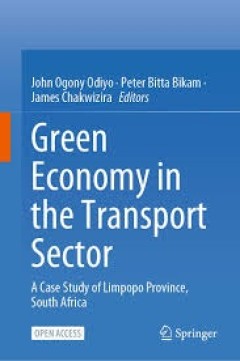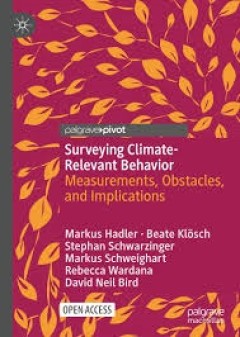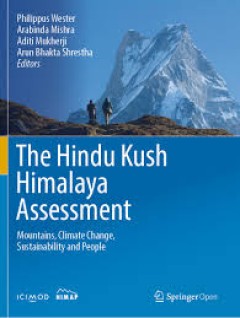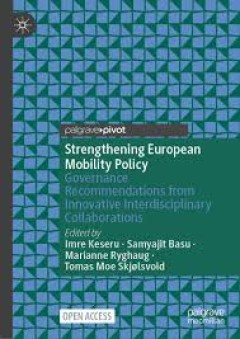Filter by

Green Economy in the Transport Sector : A Case Study of Limpopo Province, Sou…
- Edition
- -
- ISBN/ISSN
- 978-3-030-86178-0
- Collation
- -
- Series Title
- -
- Call Number
- -
- Edition
- -
- ISBN/ISSN
- 978-3-030-86178-0
- Collation
- -
- Series Title
- -
- Call Number
- -

Introduction to Development Engineering : A Framework with Applications from …
- Edition
- -
- ISBN/ISSN
- 978-3-030-86065-3
- Collation
- -
- Series Title
- -
- Call Number
- -
- Edition
- -
- ISBN/ISSN
- 978-3-030-86065-3
- Collation
- -
- Series Title
- -
- Call Number
- -

Surveying Climate-Relevant Behavior : Measurements, Obstacles, and Implications
- Edition
- -
- ISBN/ISSN
- 978-3-030-85796-7
- Collation
- -
- Series Title
- -
- Call Number
- -
- Edition
- -
- ISBN/ISSN
- 978-3-030-85796-7
- Collation
- -
- Series Title
- -
- Call Number
- -

Co-Creativity and Engaged Scholarship : Transformative Methods in Social Sust…
- Edition
- -
- ISBN/ISSN
- 978-3-030-84248-2
- Collation
- -
- Series Title
- -
- Call Number
- -
- Edition
- -
- ISBN/ISSN
- 978-3-030-84248-2
- Collation
- -
- Series Title
- -
- Call Number
- -

Wellbeing, Values and Lifestyles = Towards a New Development Paradigm
This open access book with contributions by leading global experts from diverse specialization defines a new development paradigm built on Lifestyle for Environment (LiFE). The volume outlines the contours of LiFE across five facets namely ethics and value system; sustainable consumption and production; modalities of systemic transformation; financing for resilient infrastructure, cities and s…
- Edition
- -
- ISBN/ISSN
- 9789819747306
- Collation
- XVIII, 314 hlm; ill., lamp.,
- Series Title
- -
- Call Number
- -

Weirding Landscapes = Arctic Glacier Extinction and Monsters of the Anthropocene
This open access book investigates human-environment relations in the context of the anthropocenic Arctic. Through an archaeological and anthropological study of landscape, it wields “weirding” – a creative mode of engagement with the world – as a means of coming to terms with the stranger, experiential dimensions of a planet populated by diverse non-human entities often bearing monstro…
- Edition
- -
- ISBN/ISSN
- 9783031850165
- Collation
- XXVIII, 200 hlm; ill., lamp.,
- Series Title
- -
- Call Number
- -

Transnational Southeast Asia = Communities, Contestations and Cultures
This open access book presents Southeast Asia as an interesting and conceptually meaningful site to interrogate the transnational paradigm. In featuring research from and across different nations in Southeast Asia, it asks in what ways Southeast Asia lends itself to nuanced applications of transnationalism, and what the wider cultural and collective implications of that might be. Instead of vie…
- Edition
- -
- ISBN/ISSN
- 9789819636082
- Collation
- XIX, 342 hlm,: ill, lamp; 21 cm
- Series Title
- -
- Call Number
- -

The Ocean Incubator Network Learning Toolkit
This open access book is designed to enhance ocean literacy through diverse research, educational and interdisciplinary approaches. It focuses on a number of critical themes, including: an exploration of positionality, emphasizing the importance of acknowledging one’s own perspective in ocean-related research and advocacy; the nuances of trans-cross and interdisciplinarity in ocean studies, a…
- Edition
- -
- ISBN/ISSN
- 9783031780622
- Collation
- XXX, 262 hlm; ill., lamp.,
- Series Title
- -
- Call Number
- -

The Hindu Kush Himalaya Assessment : Mountains, Climate Change, Sustainabilit…
This open access volume is the first comprehensive assessment of the Hindu Kush Himalaya (HKH) region. It comprises important scientific research on the social, economic, and environmental pillars of sustainable mountain development and will serve as a basis for evidence-based decision-making to safeguard the environment and advance people’s well-being. The compiled content is based on the co…
- Edition
- -
- ISBN/ISSN
- 9783319922881
- Collation
- -
- Series Title
- -
- Call Number
- -

Strengthening European Mobility Policy : Governance Recommendations from Inno…
This open access book showcases innovative collaborations between the Social Sciences and Humanities (SSH) and Science, Technology, Engineering, and Mathematics (STEM) disciplines to benefit European mobility policy. Each chapter has been researched by a team encompassing both social and technical expertise. The book presents nine policy recommendations aimed at enhancing mobility and logistics…
- Edition
- -
- ISBN/ISSN
- 9783031679360
- Collation
- -
- Series Title
- -
- Call Number
- -
 Computer Science, Information & General Works
Computer Science, Information & General Works  Philosophy & Psychology
Philosophy & Psychology  Religion
Religion  Social Sciences
Social Sciences  Language
Language  Pure Science
Pure Science  Applied Sciences
Applied Sciences  Art & Recreation
Art & Recreation  Literature
Literature  History & Geography
History & Geography